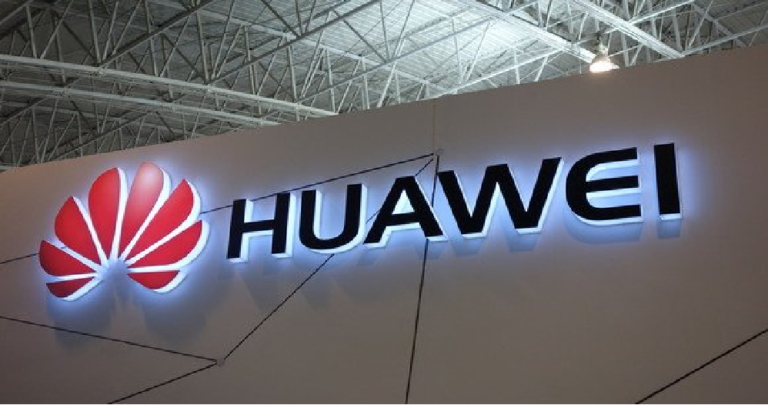
Huawei Technologies founder and CEO, Ren Zhengfei, has admitted for the first time that the company’s semiconductor capabilities are still a generation behind those of its American rivals.
However, he insists that Huawei is making progress through unconventional techniques such as cluster computing, as well as deeper investment in theoretical research. His remarks, published Tuesday on the front page of the People’s Daily, come at a critical moment in global geopolitics and tech rivalry, with China and the United States locked in a fierce battle for dominance in artificial intelligence and advanced computing.
“There is no need to worry about the chip problem,” Ren said, attempting to calm concerns over the fallout from U.S. sanctions that have crippled Chinese access to the world’s most advanced semiconductors. “We use mathematics to supplement physics, non-Moore’s law to supplement Moore’s law, and cluster computing to supplement single chips.”
Register for Tekedia Mini-MBA edition 19 (Feb 9 – May 2, 2026): big discounts for early bird.
Tekedia AI in Business Masterclass opens registrations.
Join Tekedia Capital Syndicate and co-invest in great global startups.
Register for Tekedia AI Lab: From Technical Design to Deployment (next edition begins Jan 24 2026).
Ren’s comments are notable not just for their candor, but also for what they signal: a quiet admission that the U.S. remains firmly ahead in cutting-edge chip development — a key pillar of the broader AI arms race between the two superpowers.
A Race for Technological Supremacy
The rivalry between the United States and China over technology supremacy, particularly in AI, semiconductors, and next-generation computing, has intensified rapidly over the past five years. What began with tariffs and trade restrictions under Washington’s broader China containment strategy evolved into a campaign of high-tech sanctions, especially targeting Huawei, China’s most prominent tech company.
In 2019, the U.S. government placed Huawei on an export blacklist, banning American firms from selling advanced chips and chip-making tools to the Chinese telecom giant. Since then, a series of increasingly stringent export curbs have not only barred Huawei from accessing top-tier semiconductors from firms like Nvidia and Intel, but have also targeted China’s access to advanced chip fabrication technologies used in Taiwan, South Korea, and the Netherlands.
The objective has been to stifle China’s ability to develop and deploy AI systems with military and strategic significance. The result, however, has been an acceleration in China’s domestic innovation push — with Huawei at the center of that effort.
Huawei’s Cluster Gambit and the AI Pivot
Blocked from purchasing the world’s most powerful chips, Huawei has turned to software and systems engineering to multiply the power of the chips it can produce. In April, the company launched its “AI CloudMatrix 384” system — a computing framework that links together 384 of its homegrown Ascend 910C chips. This high-density AI computing cluster allows developers and institutions to train advanced AI models on Chinese infrastructure, effectively creating a workaround to U.S. hardware restrictions.
Ren noted that while each chip may lag behind Nvidia’s most powerful offerings, cluster computing — where many less-powerful chips operate in parallel — allows Huawei to reach performance levels that are “practical” and competitive. Some analysts argue the system can even outperform Nvidia’s newest GB200 NVL72 in specific tasks. Dylan Patel, head of U.S.-based semiconductor research firm SemiAnalysis, wrote that Huawei’s launch demonstrated China’s capability to build high-performance AI systems “that can beat Nvidia on some metrics.”
Nevertheless, Ren was quick to downplay the hype surrounding Huawei’s progress. “The United States has exaggerated Huawei’s achievements,” he said. “We are not that great. We have to work hard to reach the level they claim.”
That statement, from Huawei’s top executive, is perhaps the clearest indication yet that China knows it still trails the U.S. in the foundational technologies powering the AI revolution.
Despite the sanctions, China has refused to slow down. Huawei, SMIC (China’s top chipmaker), and a host of other firms have ramped up spending and redirected R&D toward areas where foreign tech is restricted. According to Ren, Huawei is pouring 180 billion yuan — roughly $25 billion — annually into research, with nearly a third going into theoretical science, not just product development.
“Without theory, there will be no breakthroughs, and we will not catch up with the United States,” Ren said. This focus on homegrown science — not just engineering — marks a strategic shift, as China looks to reduce long-term dependence on foreign innovation ecosystems.
China’s strategy also hinges on building up its domestic semiconductor supply chain. The country has poured billions into chip startups, expanded its chip fabrication capabilities, and created government-backed investment funds aimed at achieving chip self-sufficiency by the end of this decade. At the same time, Chinese firms are exploring alternative materials like compound semiconductors, which Ren called promising, suggesting they could unlock new performance levels that bypass current limitations.
AI As The Flashpoint of the Rivalry
Artificial Intelligence, more than any other field, has become the flashpoint in the U.S.-China tech rivalry. Both countries see AI not just as an economic tool but as a national security imperative. The technology underpins everything from autonomous weapons and surveillance to financial systems and critical infrastructure.
The U.S. has tried to use its dominance in AI chips, particularly those from Nvidia, to slow China’s progress. But the rapid evolution of Chinese workarounds suggests that the AI race is far from settled. Ren’s remarks indicate that while China acknowledges the U.S. lead, it also sees new opportunities to leapfrog through architecture-level innovations and alternative computing strategies.
Ren’s comments were timed with the resumption of U.S.-China trade talks in London — meetings that are expected to once again spotlight the contentious issue of tech sanctions.



